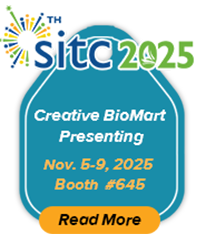Organelle Protein Extraction
Identification of proteins in organelles at subcellular levels is pivotal for understanding cellular functions. It is because protein translocation between different compartments, cycling of proteins between the cell surface and intracellular pools, and shuttling between nucleoplasm and cytoplasm is very common in eukaryotic cells. Many studies have been carried out on subcellular organelle proteins. For example, changes in proteomes of major subcellular organelles in plant cells, such as the nucleus, mitochondria, chloroplasts, peroxisomes, plasma membrane and cell wall, are intensively studied for better understanding of the abiotic stress tolerance mechanism of plants at the protein level.
In general, proteins are extracted after sample fractionation. With the help of centrifugation techniques, a typical sequential extraction process with detergent-containing buffers can yield up to four different subproteomic extracts, which are enriched in i) cytosolic proteins, ii) membrane and organelle proteins, iii) nuclear proteins and iv) cytoskeletal filaments. The protein extracts are then identified with analysis methods such as two-dimensional polyacrylamide gel electrophoresis (2-DE), LC-MS/MS, SDS-PAGE, MALDI-TOF MS and etc. Also, proteomics studies have been successfully carried out on specific cellular organelles and compartments. For example, comprehensive analysis of mitochondria in roots and hypocotyls of soybean under flooding stress has been reported.
Creative BioMart has decades of experience on subcellular fractionation and protein enrichment from various sample sources. Analyses of organellar proteins are the key bridge to the fundamentals of the cell behavior under specific environments. After purification of the target organelle, proteins are extracted and analyzed with gel or gel-independent techniques. Creative BioMart offers professional services for customers from all industries:
- Organelle isolation and purification: mitochondria, nucleus, chloroplasts, cell wall, and the plasma membrane.
- Protein separation with different analysis methods.
- Protein identification with mass spectrometry (MS).
- Metabolome analysis.
References:
- Börner, A., Warnken, U., Schnölzer, M., Von Hagen, J., Giese, N., Bauer, A., Hoheisel, J.D. (2009) Subcellular protein extraction from human pancreatic cancer tissues. BioTechniques. 46: 297-304.
- Hossain, Z., Nouri, M.-Z., Komatsu, S. (2012) Plant cell organelle proteomics in response to abiotic stress. Journal of Proteome Research. 11: 37-48.
 Figure 1 Investigation of the mitochondrial proteome of five phenotypically different cell lines.
Figure 1 Investigation of the mitochondrial proteome of five phenotypically different cell lines.
(Journal of Protenome 2018)
Contact us or send an email at for project quotations and more detailed information.
Quick Links
-

Papers’ PMID to Obtain Coupon
Submit Now -

Refer Friends & New Lab Start-up Promotions

